Your couch, remote, and even your phone harbor more bacteria than a toilet seat. That sounds terrifying, right? A spotless and germ-free space is not about perfection—it is about keeping harmful microbes in check. The good news? You do not need fancy tools or extreme methods. Just a few smart changes can make a big difference.
Key Points:
- Daily habits prevent bacteria from spreading.
- High-touch surfaces collect the most germs.
- The right products eliminate dirt effectively.
- Professional services save time and effort.
- A structured routine simplifies sanitization.
The Power of Professional Cleaning Services
A busy schedule leaves little time for deep sanitization. Many people search for home cleaning companies near me to handle difficult tasks. Professional cleaners eliminate dirt that often goes unnoticed, using advanced products that wipe out bacteria effectively.
If you struggle to keep up, hiring a service ensures bacteria do not take over. Professionals reach spots that regular cleaning misses and help maintain a healthier space.
Common Areas That Collect the Most Germs
Not all surfaces get equal attention. Some collect more bacteria than others, often in places people overlook. The dirtiest spots in most spaces include:
- Doorknobs and light switches – Constant hand contact makes them bacteria hotspots.
- Remote controls – Shared by many but rarely disinfected.
- Kitchen sponges – Perfect breeding ground for bacteria if left damp.
- Pillows and bedding – Absorb sweat and collect dust mites over time.
- Bathroom faucets – One of the first things touched after using the toilet.
If neglected, these areas contribute to the spread of germs throughout the space.
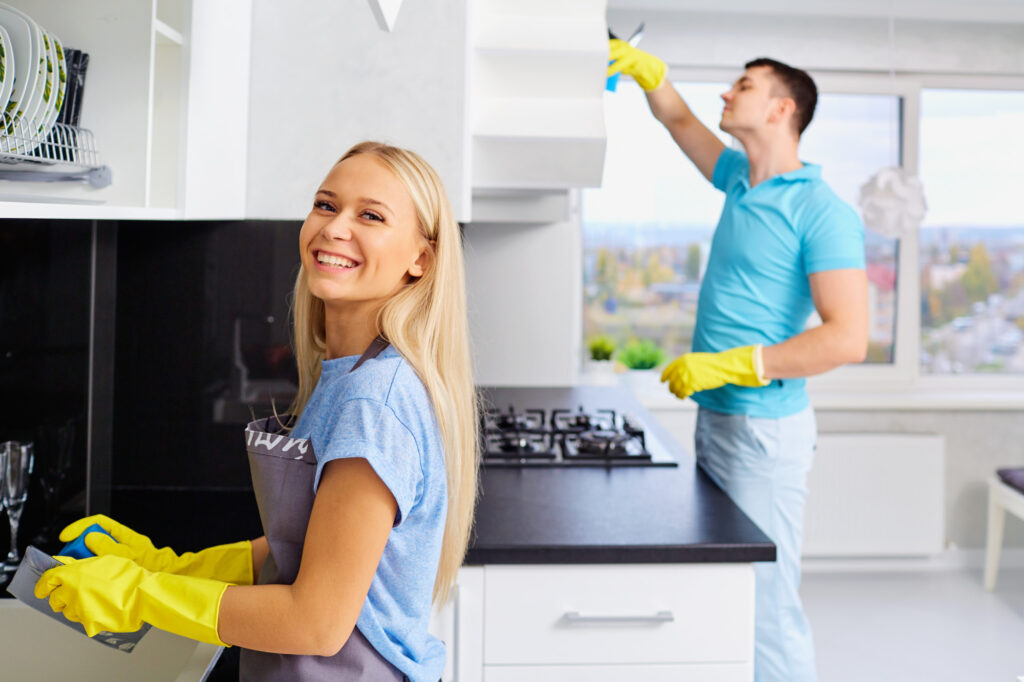
Choosing the Right Products for Maximum Effectiveness
Not all cleaning products work the same. Many contain chemicals that cause irritation. The right choices improve safety and efficiency.
Best Picks for an Effective Routine:
✔ Disinfecting wipes for quick surface care
✔ Hydrogen peroxide for non-toxic sanitization
✔ Steam cleaners for deep treatment without chemicals
✔ Microfiber cloths to trap dirt efficiently
✔ White vinegar to remove grime naturally
Avoid harsh chemicals that leave behind strong residues, especially in areas where food is prepared or children play.
How Often Should You Disinfect Surfaces?
A spotless space requires routine maintenance. Some tasks need daily attention, while others can be done weekly or monthly.
- Daily ─ Kitchen counters, tables, sinks, remote controls, and phones.
- Weekly ─ Bathroom fixtures, door handles, and light switches.
- Monthly ─ Carpets, curtains, upholstery, and mattresses.
- Seasonally ─ Deep treatment behind appliances and inside cabinets.
The more frequent the maintenance, the easier it becomes to keep everything spotless.
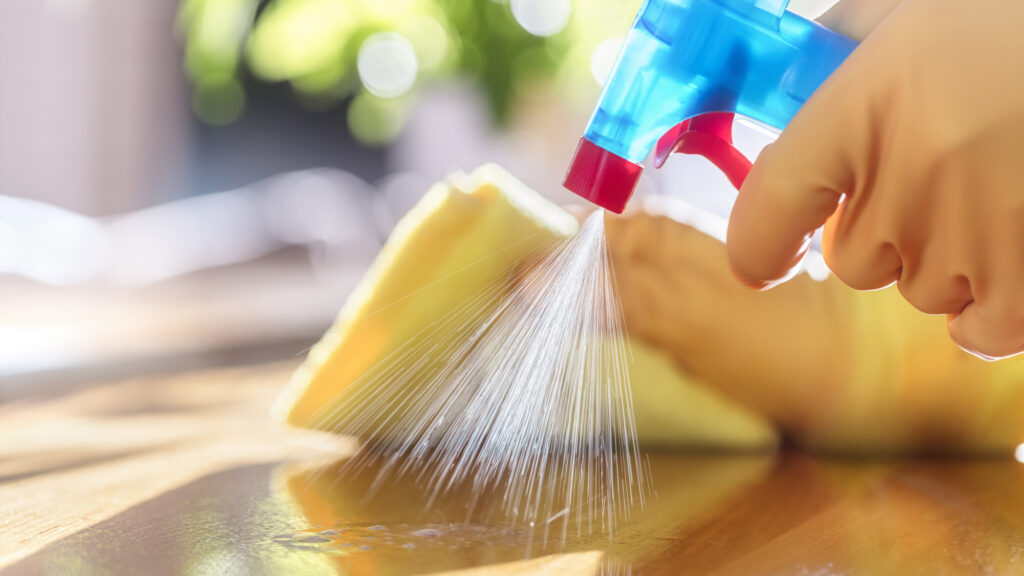
A Simple Plan for Keeping Spaces Spotless
A routine makes all the difference. Without structure, dirt builds up faster than expected. Here’s a method that works:
- Declutter first – Fewer objects mean fewer places for bacteria.
- Focus on high-touch areas – Handles, electronics, and tables need priority.
- Go room by room – Systematic methods save time.
- Improve air quality – Dust collects in vents and air purifiers.
- Tidy daily – Small efforts prevent larger messes later.
Consistency prevents overwhelming deep-clean sessions.
The Kitchen ─ A High-Risk Zone for Germs
The kitchen gets messy fast. Food preparation, spills, and moisture create the perfect conditions for bacteria.
- Scrub the sink and faucet regularly.
- Sanitize cutting boards immediately after use.
- Wipe down surfaces after meal preparation.
- Replace dish towels often.
- Empty the trash before odors develop.
Fun fact ─ A kitchen sponge can contain more bacteria than a toilet seat. Replacing sponges frequently reduces contamination risk.
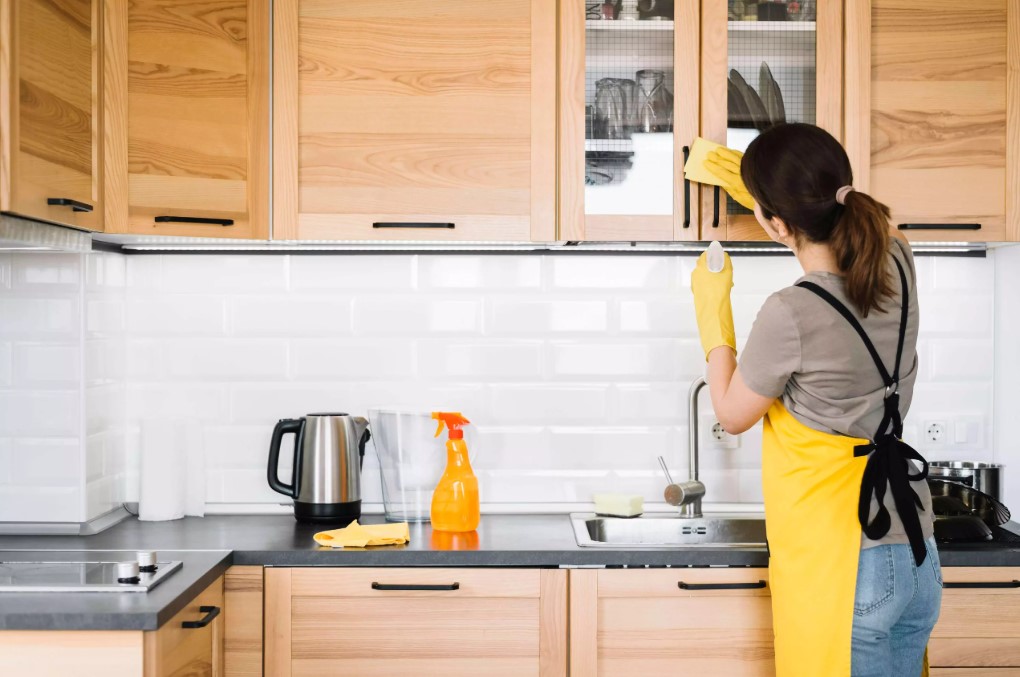
The Bathroom ─ A Moisture-Rich Bacteria Playground
Bathrooms provide the perfect conditions for bacterial growth due to constant moisture.
✔ Scrub the toilet, sink, and shower on a set schedule.
✔ Change toothbrushes every few months.
✔ Improve ventilation to prevent mold buildup.
✔ Wash towels frequently.
✔ Close the toilet lid before flushing to contain bacteria.
A well-maintained bathroom prevents mold and mildew buildup, ensuring a healthier space.
The Bedroom ─ Hygiene in the Place You Sleep
Beds accumulate sweat, dust, and allergens fast. A well-kept sleeping space improves health and reduces irritation.
- Wash sheets and pillowcases often.
- Vacuum mattresses to remove unseen dirt.
- Rotate pillows to prevent excessive dust buildup.
- Use an air purifier to improve air quality.
A fresh bedroom improves sleep quality and overall well-being.
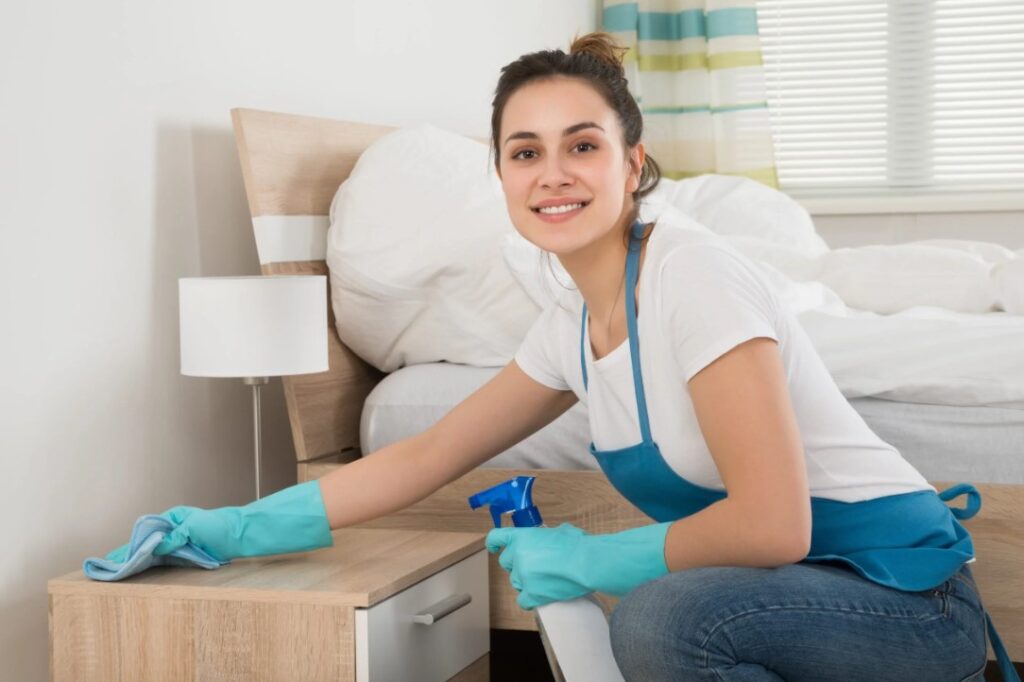
The Living Room ─ A Gathering Place Full of Hidden Germs
Living spaces attract dust and bacteria due to frequent use. Keeping them sanitized ensures a more comfortable environment.
- Wipe remote controls and electronics regularly.
- Dust furniture and surfaces to prevent buildup.
- Vacuum carpets and upholstery to remove trapped dirt.
- Minimize clutter to make upkeep easier.
Adding an air purifier helps trap airborne particles that settle on furniture.
Why Cleaning Your Floors Matters More Than You Think
Floors collect everything—from dust and pet hair to crumbs and outdoor dirt. Regular floor care improves air quality and reduces bacteria spread.
- Vacuum carpets at least twice a week.
- Mop hard floors with disinfectant solutions.
- Remove shoes before entering the house to prevent bringing in bacteria.
A well-maintained floor improves hygiene across the entire space.
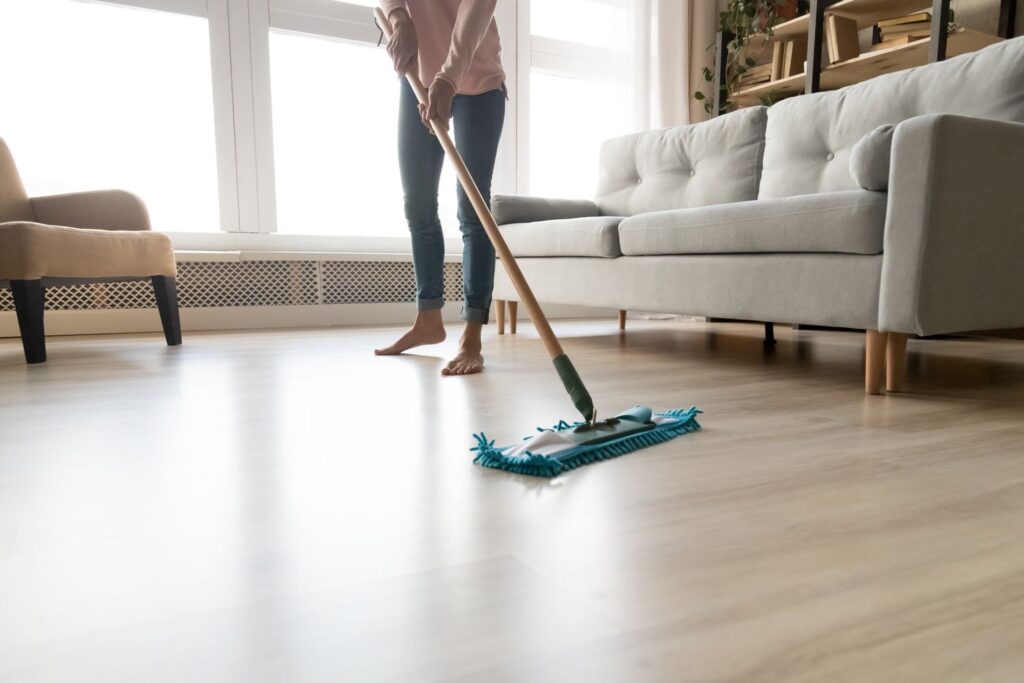
The Role of Air Quality in a Spotless Space
Airborne dust and allergens contribute to unclean surfaces. Improving air circulation reduces buildup.
✔ Change air filters regularly.
✔ Open windows for natural ventilation.
✔ Use air purifiers to trap dust and bacteria.
✔ Wipe vents and fans to prevent particle spread.
Better air quality means fewer airborne germs settling on surfaces.
The Key Takeaway for a Healthier Living Space
A spotless and germ-free environment requires effort, but it pays off. A structured plan prevents bacteria from spreading. High-contact areas need frequent sanitization. Professional assistance provides deep cleaning benefits. The right products improve efficiency.
A cleaner space leads to better health. Start today!
 Alternative News
Alternative News




